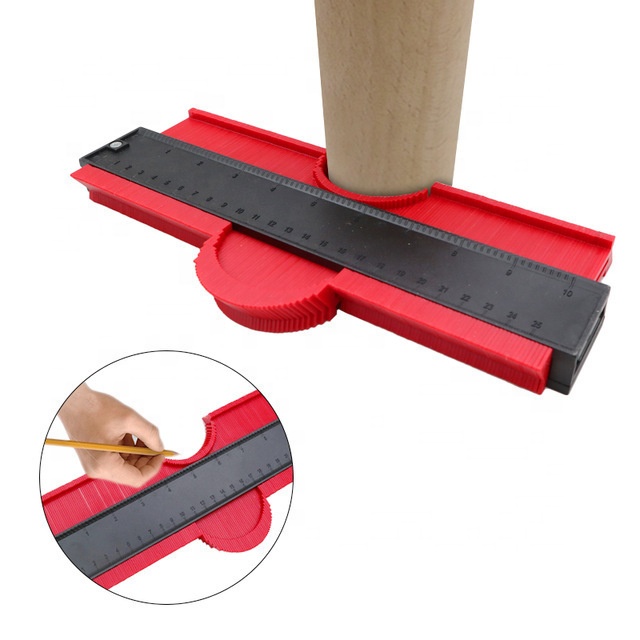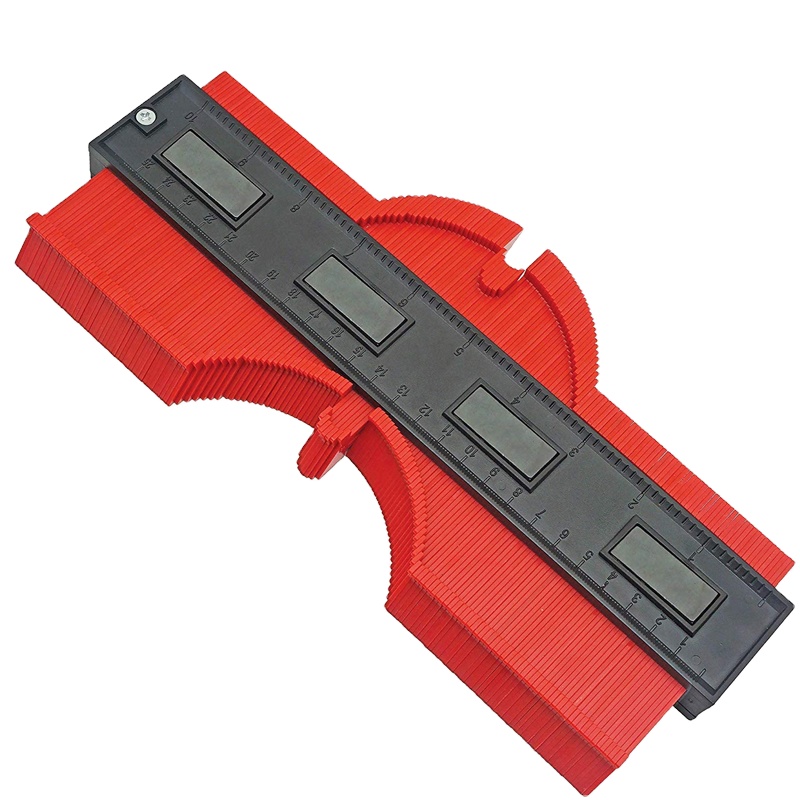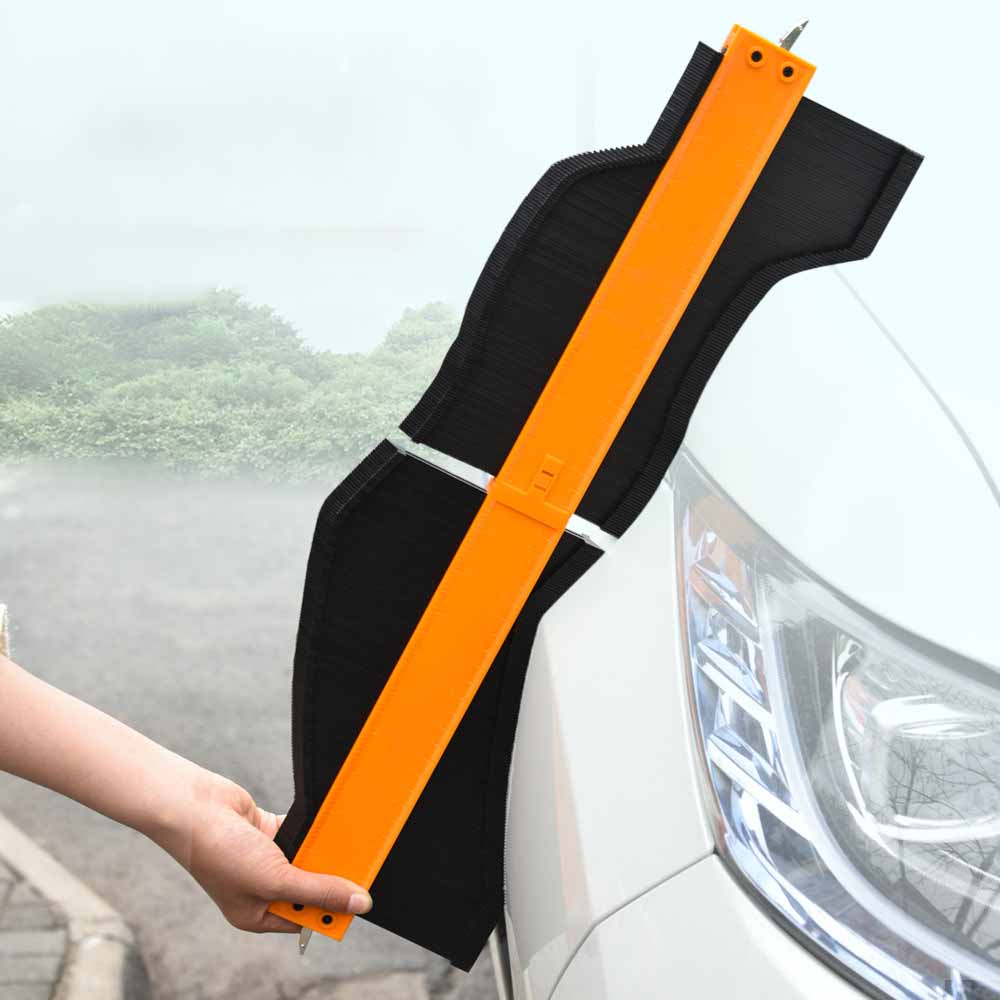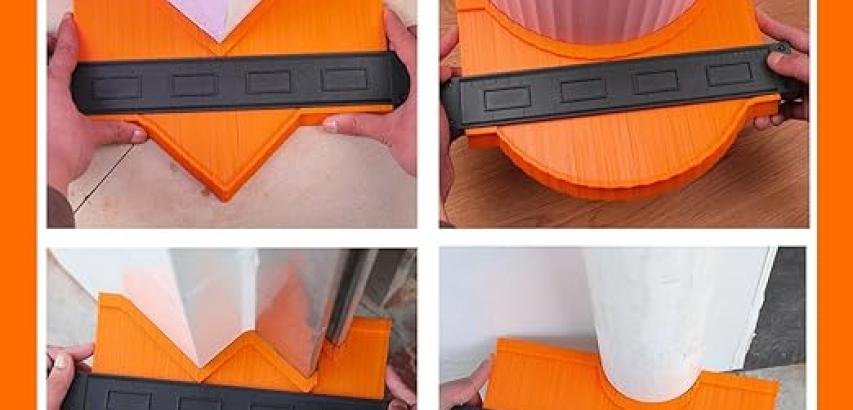A Contour Gauge Tool (also known as a profile gauge or shape duplicator) is a practical measuring instrument used to copy and transfer the exact shape of irregular or complex surfaces. It is especially useful for tasks like flooring, tiling, woodworking, and DIY home improvement projects where precise fitting around curved or uneven edges is essential.
Overview
The contour gauge consists of a series of thin, closely packed pins or plastic/metal strips that slide independently. When the tool is pressed against an object, the pins move to conform to the exact shape of the surface. This outline can then be traced onto a material for accurate cutting or shaping.
Key Features
Flexible Pins or Blades:
Made of durable plastic or metal.
Easily adjust to form around curves, corners, pipes, and other irregular shapes.
Locking Mechanism (in advanced models):
Once the shape is formed, a lock can hold the pins in place to prevent shifting.
Ensures precise tracing and prevents deformation during transfer.
Measurement Scale:
Integrated ruler or scale in inches and/or centimeters for added accuracy.
Useful for measuring depth and width of contours.
Wide Surface Coverage:
Available in various lengths (typically 5, 10, or 20 inches) to match different project needs.
Durable and Lightweight:
Portable and easy to handle.
Built to withstand wear and tear from regular use.
Common Uses
Flooring Installation: Tracing the shape of door trims or wall bases to cut flooring pieces accurately.
Tile Cutting: Duplicating curves or edges to cut tiles to fit around toilets, sinks, or corners.
Woodworking: Matching moldings, trims, or complex wood patterns.
Carpentry: Shaping around baseboards, pipes, or frames.
DIY Projects: Any project requiring an accurate outline of a complex shape.
Advantages
Saves time by eliminating guesswork in marking shapes.
Increases precision for professional-looking results.
Reduces material waste by preventing inaccurate cuts.
Easy to use, even for beginners.
How to Use a Contour Gauge Tool
Press the contour gauge firmly against the object or surface.
The pins will move and adapt to the shape.
Lock the shape (if the tool has a locking feature).
Transfer the profile onto your working material.
Use the traced outline to cut or shape the material accordingly.
Tips for Choosing the Right Contour Gauge
Material: Choose metal pins for durability or plastic for lighter jobs.
Length: Longer gauges cover wider surfaces but may be harder to store.
Locking Feature: Ideal for professional use and complex shapes.
Pin Thickness: Finer pins capture more detail.
The contour gauge tool is an essential item in any toolbox for precise duplication of curves and complex profiles. Whether you're a professional tradesperson or a DIY enthusiast, this tool enhances accuracy, efficiency, and the overall quality of your projects. It’s a smart investment for anyone working with non-linear surfaces.
 |  |  |
Buy Contour Gauge Tool - Amazon
 |  |  |
